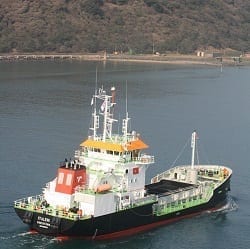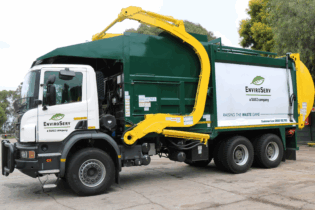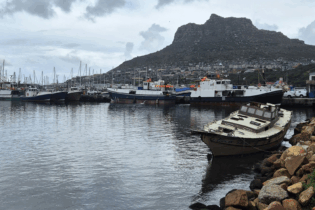The Italeni has sailed into the Port of Durban to assist in handling dredged material at South Africa’s ports.
This new 750 m3 grab hopper dredger is part of Transnet National Ports Authority (TNPA) Dredging Services R2 billion programme to renew its dredging fleet which handles approximately four million cubic metres of dredged material every year from South Africa’s ports. The renewal programme – in line with Transnet’s Market Demand Strategy to create capacity ahead of demand – began in 2010 with the delivery of the 4200m3 Isandlwana, a trailing suction hopper dredger. The contract for a third dredger, a 5,500m3 trailing suction hopper dredger, was awarded earlier this year. The budget allocation for these three dredgers represents the largest single capital purchase by TNPA.These new dredgers are fitted with the latest technology which requires an intensive training programme including simulation training for the crew to ensure they understand the high-tech equipment and can properly manage the new vessel. In the pipeline is a contract for a new plough tug to be awarded this year and a cutter suction dredger contact to be awarded in 2016. Earlier this year Dredging Services replaced two hydrographic survey boats. Tau Morwe, Chief Executive Transnet National Ports Authority, says, “In line with our strategic objectives, the new dredger will ensure that we have capacity ahead of demand, and provide spare dredging capacity for neighbouring ports. This collaboration is in line with TNPA’s Africa Strategy and results in a win-win situation for us and our neighbouring port because the mobilisation cost alone for sailing a European dredger to a southern African Port is around R20million to R30millon before starting any dredging work is undertaken.” The Italeni which will be used mainly for maintenance work in various ports was named after the battle of Italeni, which took place near the Ithala Mountains where the Zulu King Dingane defeated the Voortrekkers in 1838. The vessel took 16 months to build and has been designed and built to achieve low maintenance costs and substantially improve productivity. She will run a 24hr operation compared to the current 12hour operation and the hopper volume is 60% greater.
High-tech advancements include a fully unmanned machinery space, a fully integrated dredging control system as well as a PLC controlled engine control system, alarm monitoring system and real time digital tank soundings. It also has a customised grab position monitoring system with an accuracy of 2cm which is much higher than that of the old craft.
Dredging is a fundamental activity for ports and if no dredging is done a port will eventually have to close as vessels will not have access to enter. In its simplest form dredging consists of the excavation of material from the sea bed, and the relocation of the excavated material elsewhere for disposal. Trailing suction hopper dredgers such as the Isandlwana are used to dredge the sand traps, entrance channels and basins of ports, whereas the grab hopper dredger such as the Italeni and plough tugs are used mainly in areas that are confined and shallow such as berths and for material that is not free flowing. In South Africa the need for maintenance dredging is threefold: 1. Some of the ports have rivers running into them. These rivers bring silt into the Port which compromises port depth; 2. The movement of ships within the port creates high and low spots due to propulsion wash i.e. the ships propellers cause the sea bed material to move; 3. The effect of Littoral drift or long-shore movement of sand. This occurs primarily on the East coast of the country where the prevailing winds and currents cause a northward movement of sand, so sand flows up the coast. To counter this and to mimic the natural movement of sand, Dredging Services creates sand-traps. In Durban and Richards Bay these are just below the southern breakwater and extend into the entrance channel. The material dredged from these traps is pumped back onto the northern side of the harbour entrance to ensure that beaches are nourished. Without this the beaches in Durban and Richards Bay would become eroded.







